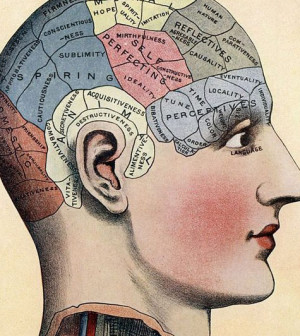- Skip Storing This Everyday Product in the Fridge Door
- Green Tea + B3 Pairing May Boost Brain Health
- Navigating Your Midlife Crisis: Embracing New Possibilities
- City Raccoons Showing Signs of Domestication
- Mapping the Exposome: Science Broadens Focus to Environmental Disease Triggers
- One Week Less on Social Media Linked to Better Mental Health
- Your Brain Changes in Stages as You Age, Study Finds
- Some Suicide Victims Show No Typical Warning Signs, Study Finds
- ByHeart Formula Faces Lawsuits After Babies Sickened With Botulism
- Switch to Vegan Diet Could Cut Your Greenhouse Gas Emissions in Half
Poverty May Hinder Kids’ Brain Development, Study Says


Poverty appears to affect the brain development of children, hampering the growth of gray matter and impairing their academic performance, researchers report.
Poor children tend to have as much as 10 percent less gray matter in several areas of the brain associated with academic skills, according to a study published July 20 in JAMA Pediatrics.
“We used to think of poverty as a ‘social’ issue, but what we are learning now is that it is a biomedical issue that is affecting brain growth,” said senior study author Seth Pollak, a professor of psychology, pediatrics, anthropology and neuroscience at the University of Wisconsin-Madison.
The results could have profound implications for the United States, where low-income students now represent the majority of kids in public schools, the study authors said in background information. Fifty-one percent of public school students came from low-income families in 2013.
Previous studies have shown that children living in poverty tend to perform poorly in school, the authors say. They have markedly lower test scores, and do not go as far in school as their well-off peers.
To see whether this is due to some physical effect that poverty might have on a child’s brain, Pollak and his colleagues analyzed MRI scans of 389 typically developing kids aged 4 to 22, assessing the amount of gray matter in the whole brain as well as the frontal lobe, temporal lobe and hippocampus.
“Gray matter contains most of the brain’s neuronal cells,” Pollak said. “In other words, other parts of the brain — like white matter — carry information from one section of the brain to another. But the gray matter is where seeing and hearing, memory, emotions, speech, decision making and self-control occur.”
Children living below 150 percent of the federal poverty level — $36,375 for a family of four — had 3 percent to 4 percent less gray matter in important regions of their brain, compared to the norm, the authors found.
Those in families living below the federal poverty level fared even worse, with 8 percent to 10 percent less gray matter in those same brain regions. The federal poverty level in 2015 is $24,250 for a family of four.
These same kids scored an average of four to seven points lower on standardized tests, the researchers said.
The team estimated that as much as 20 percent of the gap in test scores could be explained by reduced brain development.
A host of poverty-related issues likely contribute to developmental lags in children’s brains, Pollak said.
Low-income kids are less likely to get the type of stimulation from their parents and environment that helps the brain grow, he said. For example, they hear fewer new words, and have fewer opportunities to read or play games.
Their brain development also can be affected by factors related to impoverishment, such as high stress levels, poor sleep, crowding and poor nutrition, Pollak said.
This study serves as a call to action, given what’s already known about the effects of poverty on child development, said Dr. Joan Luby, a professor of child psychiatry at Washington University School of Medicine in St. Louis.
“The thing that’s really important about this study in the context of the broader literature is that there really is enough scientific evidence to take public health action at this point,” said Luby, who wrote an editorial accompanying the study.
“Poverty negatively affects brain development, and we also know that early interventions are powerfully effective,” Luby said. “They are more effective than interventions later in life, and they also are cost-effective.”
Communities, charitable groups and government programs can help increase stability in these homes, Pollak and Luby said. All children should have a regular home and a bed, good nutrition, stimulating educational programs and social activities, and parents who are less stressed and can spend more time with them.
“It’s kind of like growing a garden,” Luby said. “If you planted seeds and you failed to water the seeds and didn’t fertilize them, your garden wouldn’t grow very well. Children are the same.”
More information
For more on child development, visit the U.S. National Institutes of Health.
Source: HealthDay
Copyright © 2025 HealthDay. All rights reserved.










